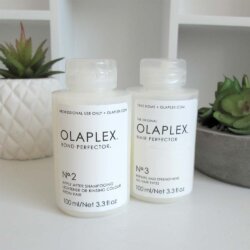How Does Olaplex Hair Treatment Work?
What is Olaplex? Olaplex is a line of hair repair, “bond building” treatments that’s getting heaps of buzz in the hair community, especially with people who have damaged hair from excessive bleach. It’s available in a couple of forms – Olaplex can be mixed in with bleaching products to minimise damage, or it can be used as a separate treatment. Here’s …
